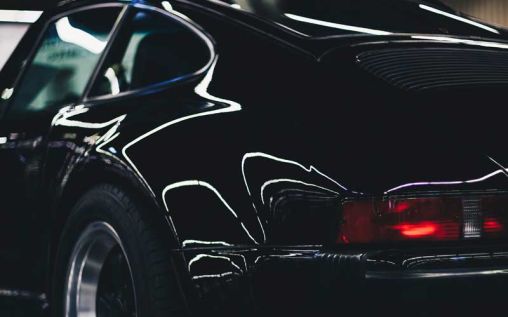Introduction to Calgary Self-Healing Ceramic Coating
Posted by admin at 12 July 2020, at 12 : 33 PM

An important part of owning a car is knowing when to protect it from possible threats. One of these threats is something we know as corrosion, a chemical reaction that occurs when your car comes into contact with moisture, salt, or poor maintenance.
And a huge stain of rust is something we surely want to avoid. It does not only affect the looks of our car, but it also reduces its resistance to further corrosion, which may spread all over. It may also extend to the internal layer of our automobile, affecting its mechanism and functionality.
For such cases, there are alternatives we can go for, such as self-healing ceramic coating. But before we discuss it even further, let’s talk a little about how oxidation works and how serious of a threat it is.
Metal and Oxidation
When it comes to structures made out of metal, corrosion is one of the most common threats. When the surface of metal structures interact with air containing moisture, a whole chemical reaction occurs, which leads to oxidation.
Areas close to the sea can also affect metals because of the salt that comes with the sea breeze. Areas that are prompt to raining, or with high levels of humidity, endanger the safety of structures made out of metal.
Oxidation can affect the outer layer of any metal, making them weaker and increasing the risks of suffering from internal damage, which may lead to functional problems depending on the structure.
A study conducted in China revealed that corrosion is the cause of annual expenses of more than 310 billion US dollars, which consists of almost 3.34% of the country’s GDP.
A possible solution to this problem is self-healing coating materials. A self-healing coating could be described as a protective armor that possesses the capability of self-repairing itself from corrosion or any potential physical damage without requiring much or no intervention at all.
There are different types of coats that fit this description. Autonomous ones work by integrating healing agents that produce a self-healing mechanism, as well as using oxidation inhibitors. Non-autonomous coats use light or heat to trigger chemical reactions that produce the same results.
Ceramic Coating for Cars
For car owners, it is pretty common to want a car beautiful and shiny on a regular basis. But this is not possible because of the oxidation process we talked about. As time flies by, the outer layer of your car begins to weaken, losing strength and shine because of external factors.
Most people use wax to achieve the level of shine a car deserves, but a wax coat has no chance against environmental threats such as rain, sea breeze, extreme weather, climate changes, and worst of them all, pollution. Although wax may be a temporary solution, they are not as recommended.
That’s why I’m going to explain how ceramic-coating works, and why it is one of the best solutions to maintain the beauty of your car and protect it from external hazards that may hinder its metallic surface.
First of all, you need to know that ceramic-coating sticks to the paint of your car as an extra layer of skin, providing a new layer of protective armor. This protective armor won’t require to be reapplied since it is not removed after being applied. What’s so great about it is that it also contains self-healing capabilities, making it even more resistant.
This ceramic will also provide a whole new level of beauty to your car, making it as shiny as it was the day you purchased it. What’s so great about it is that it kinda makes your car water-proof, making it a really good alternative for car owners that live in areas with lots of humidity or rain. Mud and dirt become a lower threat, too, since as water, they don’t get accumulated, but they kind of got slipped away from the surface of the coating.
When it comes to applying it, though, you should really consider hiring a professional service provider if you have no experience with it, since you may make mistakes during the process, thus, reducing its efficiency. Usually, you would spent from $500 to $2000, and the process can take from 1 day to a week, depending on the service provider.

